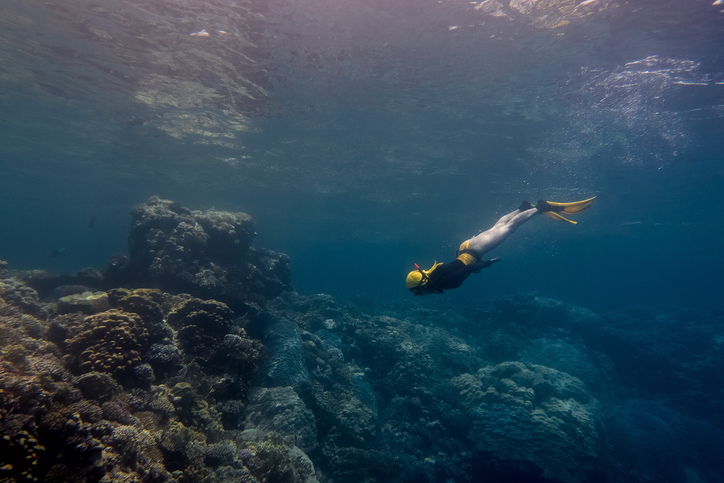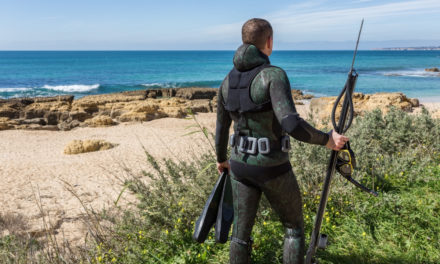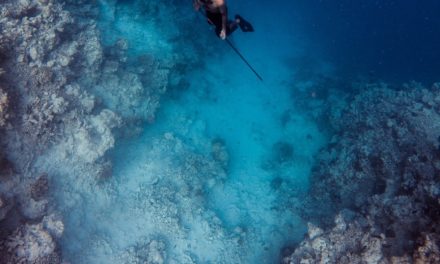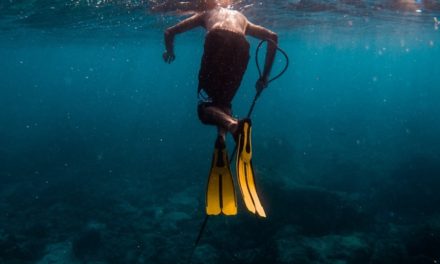What Are Basic Safety Rules for Freediving and Spearfishing?
As with any other sport, freediving and spearfishing have their fair share of risks. Any time you’re in the water, you are at the mercy of mother nature. With proper training, however, it’s easy to overcome these obstacles. Being prepared is the most important safety rule in freediving and spearfishing.
Here are a few other key safety rules to follow and pay attention to before your next dive.
- Train With A Buddy: Any time you’re dealing with holding your breath and/or water, it’s important you train with a partner. They will be there to look out for your safety and to maximize your training.
- Limits: Be sure to dive within your limits. Many beginners will want to push their training dives to the ultimate maximum of their abilities and could easily find them in a perilous situation. Don’t push it and remember that you’re going to grow as you gain more experience.
- Hyperventilating: Knowing the warning signs that your body sends out when under duress is super important. These warning signs should be taken seriously and understanding your responsibilities is key to staying safe.
- Dry Training: Complications may occur at any point while training in water. You could lose consciousness, you could swallow water, or something even more serious may take place. Dry training, while still taking the proper precautions, is safer and more convenient.
Can You Explain the Difference Between Dry Training and Wet Training?
It’s pretty much exactly as it sounds–dry training is on land, and wet training is in the water. Nothing can take the place of wet training as it gives you the most realistic conditions for freediving and spearfishing. Dry training, however, is what the professionals do to build lung capacity and get in the right place mentally for their dives.
What About the Pressure Underwater? How Do I Equalize for Longer Dives?
Getting into freediving and spearfishing means knowing how to equalize the pressure in your body. You may have experienced this while diving yourself or flying in an airplane. The pressure builds in your sinus cavities and pain begins. Freedivers will be training their equalization techniques at the same time as training for longer dives by static apnea training.
The first thing you’ll want to do is pre-equalize before getting in the water. The last thing you’re going to want is to spend oxygen while equalizing in the water. If you’re in the water, you’ll need to equalize as quickly and efficiently as possible and that’s where the Valsalva Method comes into play.
The easiest way to equalize is the Valsalva Method. The Valsalva Method is when you pinch your nose and try to blow air through it. This should force air through your sinuses keeping them pressurized as you dive. This may be the earliest method taught to you to relieve this pressure. Staying equalized means less energy is used to clear your systems allowing for longer dives.
I Keep Hearing About Hyperventilating, What Does It Mean?
When we think of hyperventilating, often our minds go to breathing heavily or too quickly. In relation to freediving, hyperventilating actually has a different meaning. Let’s take a look at how hyperventilation occurs in the body.
When you breathe, you’re taking oxygen while breathing in, it then turns into carbon dioxide and is expelled when you exhale. When freediving, you’re not taking in any oxygen because you’re holding your breath. This leads to a buildup of carbon dioxide that needs to be exhaled but instead is sitting in the lungs and bloodstream.
From this point, your body sends signals to the brain telling you to breathe. Your diaphragm will begin to convulse due to the buildup of CO2. With training, you can teach your body to push past these convulsions to the next step–spleen-venting.
Seen in the wild while observing seals and whales, a spleen vent is where the body releases oxygen into the bloodstream. In humans, this is usually experienced when the body experiences shock. Researchers have actually discovered that this may be an evolutionary trait in mammals. The spleen has been called a biological scuba tank as up to 15% more oxygen-rich blood courses through your system allowing you to breathe longer.
This isn’t an unlimited supply of oxygen, however, so if you keep holding your breath, you will experience the next stage in hyperventilation. Your brain uses 20% of the body’s oxygen to function. When you begin to lose the oxygen within, the brain will actually shut off to protect as much oxygen as possible. This is called the blackout phase. If you reach this phase while freediving, chances are that you will not make it out alive and hyperventilation is complete.
To avoid hyperventilation, it’s important to train appropriately and often to increase your lung capacity. Prepare, learn, and practice the below techniques and you’ll be good to go.
Why Do Some Divers Train Using Static Apnea?
If you research the internet for freediving training, you’ll no doubt come across static apnea as a training technique. The definition of apnea is a temporary cessation of breathing. Static is the act of lacking movement. Place the two terms together and you have static apnea–lacking movement while holding your breath.
Divers choose static apnea training because it’s the best way to mimic the experience of being in the water. Divers practice the static apnea technique in both wet and dry training.
In wet training, the diver will lay on their backs while floating on the surface of the water. When the body is relaxed, they will roll over and submerge their face underwater. They will try to remain calm and in a meditative state as they hold their breath. A partner will tap the diver every few moments and the diver will give a quick hand maneuver while keeping the body completely still. Once finished, they will record their times and discuss with their partner what they can do to gain time.
Dry training is exactly the same as wet training, just out of the water. The diver will lay on a flat surface and relax their bodies. They will hold their breath while laying on their bellies. The partner will assist by tapping the “diver” and making sure they’re still breathing.
Both methods require a still body and a clear mind. Your brain will give up before your body does. Pay attention to your body and its signals while knowing your limits. Relaxing the body is key to training in static apnea and that is what we’ll talk about next.
You Tell Me to Relax, But How Can I Do That While Underwater?
It will take time to build your skills to freedive at deep depths for long periods of time. Learning to relax the body is one of the key abilities that will build this tolerance. This can be done through meditation practice, static apnea training, or any other method that requires your body to be still and free of movement.
To spearfish, you’ll need to remember that every movement you make in the water alerts fish to your presence. The less you move, the better you’ll do. Your movement will also expend energy and suck up the much-needed oxygen. Training to relax your body and breathing outside of the water will translate perfectly to being in the water.
Break It Down For Me. How Do I Hold My Breath Longer?
You’ve taken in all of the information above and you want to boil it all down–this is the section for you. Here is how to hold your breath longer when spearfishing in simplified form.
- Relax Your Breathing: Find a method to relax your breathing using a method that works best for you personally. This can be meditation or simply paying attention to the breath and calming the body.
- Pre-Equalize: Equalize the pressure in your sinus cavities prior to entering the water. This will allow you to keep as much oxygen and energy in the body during the dive.
- Don’t Do Too Much: Think back to your static apnea training. Everything you did was deliberate and intentional. This is key to maintaining oxygen levels.
- Controlled Movements: It’s not just important to control your body with calm movements for longer-lasting breaths but also because you want to keep the fish in the area to spearfish. Controlled movements allow you to be in the environment while using the lowest amount of energy and oxygen possible.
- Stay Flat: You’ll want to make sure your body is as flat as possible when freediving. Angles can shift the body and organs in ways that do not help when trying to hold the breath. Staying flat keeps your body still and controlled for longer dives.
- Get Your Gear Right: The right gear is important in spearfishing and if wanting to dive for longer periods, lighter gear will be key. Getting the weight belt perfect will come with experience. Practice and you’ll know what you can handle.
- Know Your Limits: This has been mentioned throughout the post but it’s so crucial to know your limits. This can only come through your training. You and your partner will know just how much you can handle. You shouldn’t push past your training unless the conditions are perfect which is rarely the case.
All of the above information is not meant to scare you away from freediving or spearfishing. If anything, it should be used as a guide to stay safe and train effectively to be better at the sport. Remember that there are a lot of safety precautions and training necessary to have a successful experience.
Aside from all of these necessities, it’s also important to have fun. This is, after all, why you’re participating in the sport. Your hard work on land will produce amazing results in the water. You’ll have more time in the “kill zone” to catch the ideal fish. Just remember to keep calm, train hard, and play harder.
Here are a couple of videos that I hope you find useful: Video 1 and Video 2.






